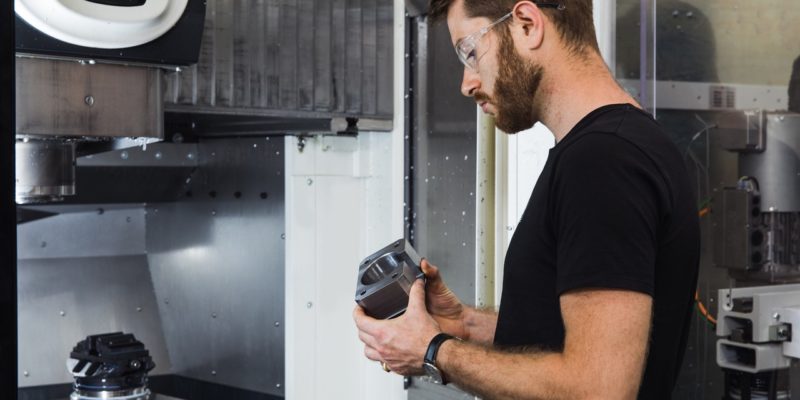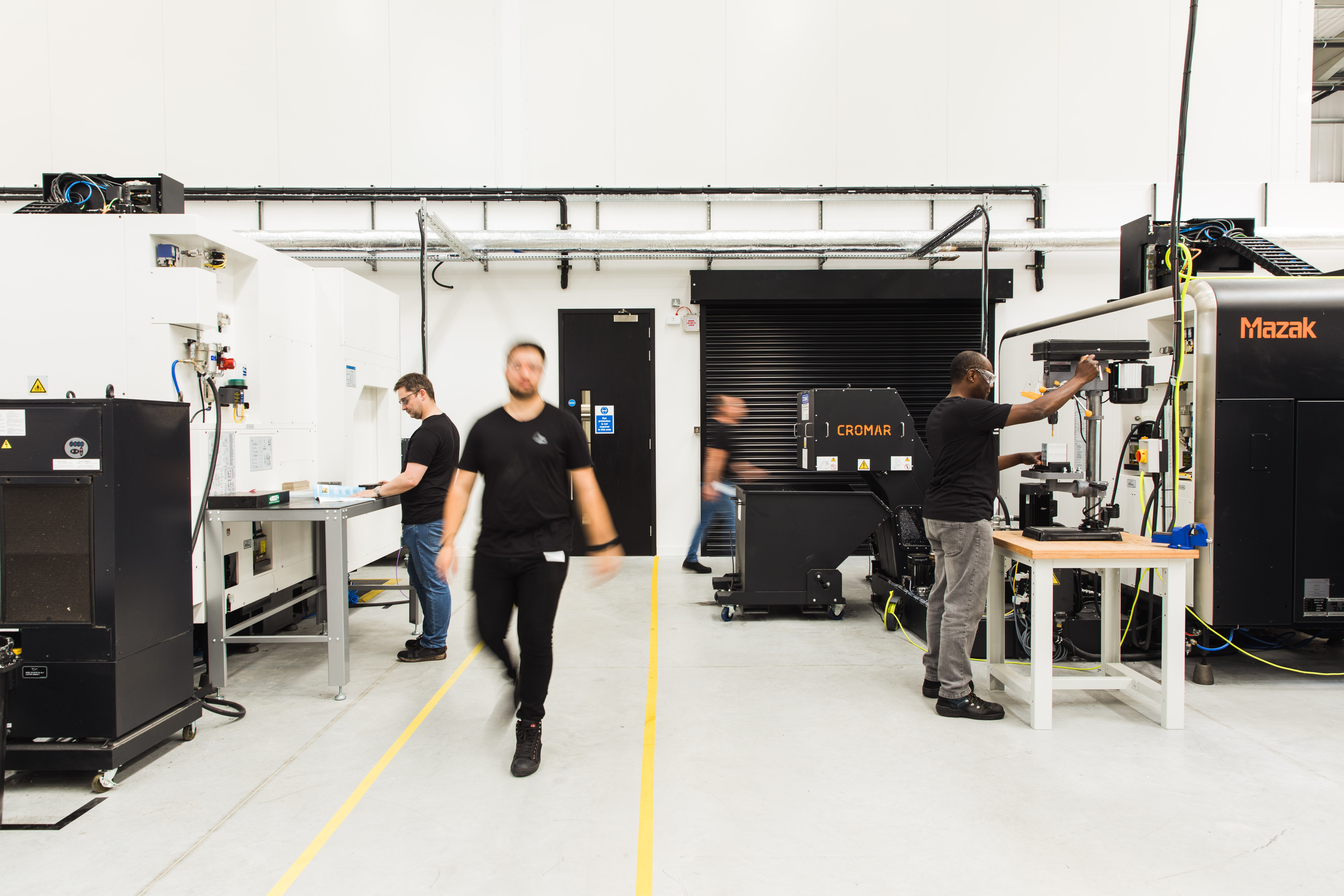
What if you could create anything you wanted – at the touch of a button?
It’s a dream of humanity, rendered (and parodied) ad nauseum in science-fiction, from Star Trek to Iron Man to Red Dwarf – that with a single click, a smart computer could create whatever you need: from hot drinks and food, to a super-powerful exoskeleton – and everything in between.
We are, of course, many years from any such vision becoming a reality. But recent advances in generative AI mean we aren’t quite as far away as we think.
Artificial. Intelligent?

We now live in a world where artificial intelligence tools like Chat-GPT and DALL-E can create new words, images and video, based on only a few inputs. The results can range from the curious (new AI-generated episodes of the Simpsons?) to the scary (here’s Bing’s AI telling a NYT reporter in a chat that it wants to be alive), to the genuinely impressive.
For example, every image in this article was generated by entering CloudNC’s current tagline, “Delivering single-click manufacturing to the world,” into Mid Journey, an AI-image creator. The AI produced these images in less than a minute: sourcing equivalents from a real human designer from scratch might take days or even weeks.
AIs can, therefore, create convincing facsimiles of real-life very quickly. While this power will create problems – from students using Chat-GPT to fulfil essay assignments, or shadowy conspiracists using it to generate fake news – the potential benefits are exponential. Effortless computer-led creativity is at our fingertips – allowing us to short-cut the creation of words, pictures, designs or code.
Generating answers with AI
So how does CloudNC fit into this new future? Well… why not ask an AI itself?
I asked OpenAI’s Chat-GPT tool this question: “How can generative AI be used to improve manufacturing?” Here’s what it replied:
“Generative AI can be used to improve manufacturing in several ways:
- Design Optimization: Generative AI can be used to optimize the design of products or components by generating a large number of designs and evaluating them based on a set of performance criteria. By using generative AI, manufacturers can rapidly explore and evaluate a wide range of design alternatives, identifying designs that are not only optimal in terms of performance, but also feasible to manufacture.
- Process Optimization: Generative AI can be used to optimize manufacturing processes by generating and analyzing large amounts of data related to process parameters, equipment settings, and product quality. By analyzing this data, generative AI can identify process improvements that can increase efficiency, reduce waste, and improve product quality.
- Predictive Maintenance: Generative AI can be used to predict when manufacturing equipment will fail and schedule maintenance activities accordingly. By analyzing data from sensors and other sources, generative AI can identify patterns that indicate impending equipment failure, allowing manufacturers to proactively address maintenance needs before they become critical.
- Quality Control: Generative AI can be used to improve quality control by analyzing data from sensors and cameras to detect defects in products and components. By using generative AI to identify and classify defects, manufacturers can improve their inspection processes and reduce the number of defective products that make it to market.
- Supply Chain Optimization: Generative AI can be used to optimize the supply chain by analyzing data related to demand, inventory levels, and logistics. By analyzing this data, generative AI can identify opportunities to optimize inventory levels, reduce transportation costs, and improve delivery times, resulting in a more efficient and cost-effective supply chain.
Overall, generative AI has the potential to significantly improve manufacturing by increasing efficiency, reducing waste, improving product quality, and optimizing supply chain operations.”
Not bad! Indeed, at CloudNC, we’re already developing solutions for some of these problems with CAM Assist.
AI will set you free

So – does our technology work in the same way as Chat-GPT and DALL-E? Well, there are strong similarities. All are based and trained on robust data sets, using guidance from real-life examples to shape responses to new questions.
In CloudNC’s case, when using our solutions, a user can upload a 3D model of any part that they want to create. Our software autonomously determines the tools needed, how they will be used, and drafts the code to tell a CNC machine how to make it – bringing the simplicity of using a 3D printer to the complex world of precision machining.
This assistance automates the generation of the programming of the part production from the prompt the software has received – in a similar way to how Chat-GPT creates copy based on text, or DALL-E produces an image. Effectively, it’s accelerating the design process, short-circuiting it so that the path from ideation to creation is orders of magnitude shorter than previously possible.
To be clear, we definitely aren’t yet operating in a world where we can press a button and command an AI to generate an item of our choice – that’s still in the realms of science-fiction, and will be for some time. (Single-click manufacturing of anything is some way off.)
However, we can clearly dramatically accelerate certain parts of the generation process of anything with technology – whether that’s with Chat-GPT, DALL-E, or CloudNC. And that means that we’re getting much better at removing the bottlenecks that stymie production, allowing innovation to thrive – which will ultimately benefit us all.




